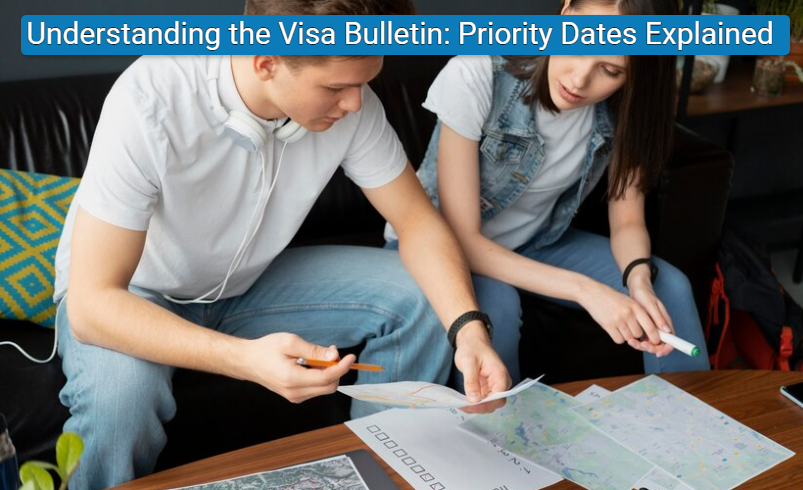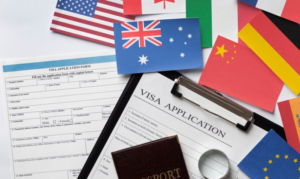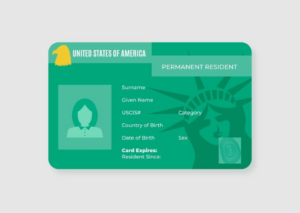Understanding the Visa Bulletin: Priority Dates Explained

Introduction: Breaking Down the Visa Bulletin
Thousands of immigrants each year wait for their opportunity to adjust their status or enter the U.S. as an immigrant, yet they are confounded by one primary factor the visa bulletin. Monthly published, it determines who gets to proceed with the green card process based on the availability of visas and a priority date system.
In this article, we are going to break down the visa bulletin explanation into understandable words and give you clarity of how it will affect your path to obtaining a green card.
What is the Visa Bulletin and Who Compiles It?
The visa usa bulletin is a month-long report produced by the United States Department of State. The document provides dates upon which applicants of green cards for both employment and family sponsorships are to progress according to visa number availability.
Every edition of the uscis monthly bulletin is split up by preference category and charge ability country so that there is an equitable distribution of the limited number of immigrant visas available annually.
The uscis visa bulletin contains two important tables:
- Final Action Dates: Shows the date upon which a green card may be granted.
- Dates for Filing: Shows the date upon which the application for the adjustment of status may be filed.
Applicants must check which chart to follow, as USCIS may use one or the other depending on backlog and operational strategy.
If you’re wondering when does visa bulletin come out, it is usually released during the second week of every month, though exact dates may vary. This is why many ask when visa bulletin is released or when do visa bulletin come out—because your next step hinges on its release.
What Is a Priority Date?

A priority date is the date your immigration petition is received by the U.S. government. This is the date your position in line for a green card is recorded.
- For family-based visas, it is the date Form I-130 is received by USCIS.
- For employment-based visas, it is typically the date the labor certification (PERM) is filed or the I-140 is received, depending on the case.
Your priority date needs to be current under the bulletin green card for you to continue with the adjustment of status or processing of your immigrant visa. The priority date uscis bulletin chart enables you to monitor this progress.
Most applicants rely on tools such as the visa bulletin priority date calculator or visa bulletin priority date estimator to predict their waiting time, but the predictions may differ because of politics, administration, or world factors.
How to Read and Interpret the Visa Bulletin
The visa bulletin explanation may be overwhelming at first glance, but step by step it becomes manageable.
Step 1: Know Your Category
Step 2: Know Your Country of Chargeability
- This is typically your country of birth, not citizenship.
- Some countries (India, China, Mexico, and the Philippines) have longer wait times because demand is greater.
Step 3: Find Your Priority Date
- Look at the visa bulletin action dates and determine if your priority date is before the date listed.
- If it is, you move on. If not, you wait.
It is also necessary to look at the adjustment of the status bulletin as released by USCIS. They make a monthly announcement regarding which chart to use—Final Action Dates or Dates for Filing.
The complexity is the reason why thousands look for guides on how to read visa bulletins or wait for the uscis priority date bulletin postings.
Visa Categories and Their Effect on Priority Dates

There are several visa categories under family and employment-based systems, and each affects how fast a case progresses.
Family-Based Categories
- F1 – Unmarried children and sons and daughters of U.S. citizens
- F2A/F2B – Spouses, children, and unmarried adult children of lawful permanent residents
- F3 – Married daughters and sons of U.S. citizens
- F4 – Brothers and sisters of U.S. citizens
Employment-Based Categories
- EB-1 – Priority workers
- EB-2 – Advanced degree professionals
- EB-3 – Professionals and skilled workers
- EB-4 – Special immigrants
- EB-5 – Investors
Your category determines your wait time. For example, EB-1 India might advance faster than EB-2 India because of varying levels of demand.
The visa bulletin movement is dynamic and influenced by:
- Annual numerical limits
- Visa spillover from unused categories
- Country-specific demand
These applicants ask to question why isn’t the visa bulletin advancing when they’ve had no forward movement for months. This happens in high-demand categories, or in years where the visa cap is rapidly reached.
Country-Specific Limits and Visa Backlogs

U.S. immigration law caps the number of green cards per category and nation. No one country can receive more than 7% of the total visas in a category during a fiscal year.
This creates visa backlogs for the nationals of nations such as:
- India (particularly in EB-2, EB-3)
- China
- Mexico
- Philippines
The us green card bulletin and usa green card bulletin both indicate these limits, with distinct columns for oversubscribed nations.
Certain applicants are also cross-chargeable, to utilize a spouse’s country of birth if it’s later to ensure more favorable date.
What Does It Mean When Your Priority Date Becomes Current?
When your priority date becomes current, you can proceed with the next steps towards permanent residence.
If in the United States:
You submit Form I-485 adjustment of status, as long as the adjustment of status bulletin is confirmed eligibility.
If Abroad:
Your case goes to the National Visa Center (NVC) for consular processing.
It’s important to move quickly, as delays can cause the case to be closed or require further background checks. Certain visa categories are current for all nations in some months—like F2A—so applicants can file right away.
Most applicants lose out by failing to review the uscis monthly bulletin regularly.
How to Estimate Your Green Card Wait Time

One of the most frequently asked questions is: How long will it take to receive my green card?
Although there is no government official prediction system, most individuals turns to resources such as the visa bulletin priority date calculator or visa bulletin priority date estimator.
These resources utilize:
- Your priority date
- Your preference category
- Your country of changeability
- Current and past data from the US Green Card bulletin
While not 100% accurate, they offer a ballpark figure to help with life planning (job moves, travel, family decisions, etc.). Just remember: everything is subject to annual numerical caps, presidential orders, and processing delays.
Final Thoughts: Master the Bulletin, Own Your Timeline
The visa bulletin may seem like an abstract bureaucratic document, but it plays a critical role in your green card journey. Whether you’re tracking your bulletin green card progress or trying to understand visa bulletin movement, the key is consistent monitoring, informed decision-making, and sometimes, patience.
Understanding your final action date visa bulletin and matching it with USCIS guidelines puts you in charge. It allows you to act when you should—filing, document preparation, or seeking a lawyer before it’s too late.
Don’t just follow the visa bulletin—learn it inside out.
Your Journey Deserves Clarity—Let’s Guide You Through It
Confused by the visa bulletin or your priority date? Our professional immigration lawyers at Passage Law are here to make it easy and advance your case.
